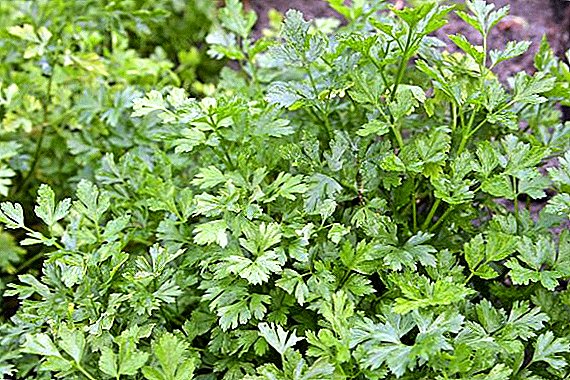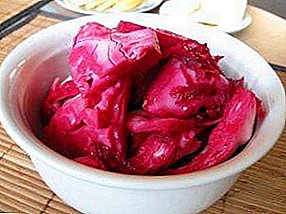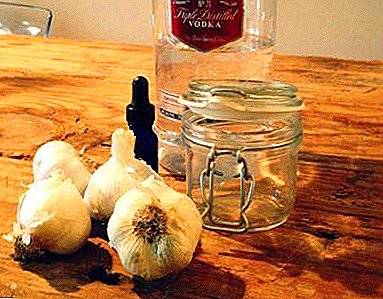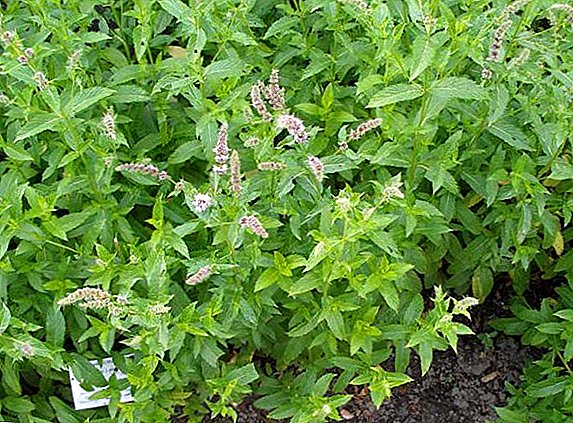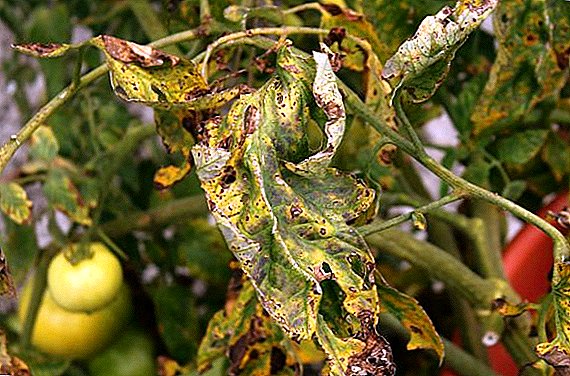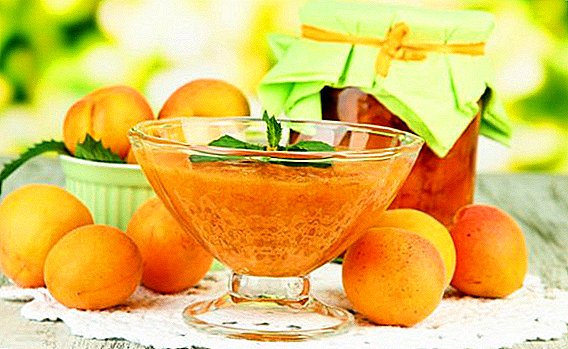 Properly preparing apricots for the winter means providing yourself and your family at the worst time of the year: with vitamins, minerals, pectin and other beneficial substances that are present in excess in this fruit (juice and five-minute jam retain all the active elements of fresh apricot). They will be especially useful to children, pregnant women, the elderly, cardiac, hypertensive, etc .; delicious product that can be enjoyed before the new harvest, making desserts from it, adding to children's cereals, using in the form of fillings in cakes, etc.
Properly preparing apricots for the winter means providing yourself and your family at the worst time of the year: with vitamins, minerals, pectin and other beneficial substances that are present in excess in this fruit (juice and five-minute jam retain all the active elements of fresh apricot). They will be especially useful to children, pregnant women, the elderly, cardiac, hypertensive, etc .; delicious product that can be enjoyed before the new harvest, making desserts from it, adding to children's cereals, using in the form of fillings in cakes, etc.
Did you know? The name of the apricot is from the Latin rassokh (early) and apricus (sunny, warmed by the sun). This word came to us from the Dutch language in the 18th century - abrikoos (the Dutch borrowed it from the Portuguese - albricoque, and those from the Arabs-Moors - al-birquq, and the Moors in turn - from the Latin). Until the 18th century, this fruit in the Ukrainian lands and the Crimea was called Zherdel (this word came from Persia). The question of the apricot’s homeland is not completely resolved. Some believe that this is China, others call India, and others - the Transcaucasus (Armenia). However that may be, this berry has been known to Europeans for more than 2000 years.
Apricot Jam Recipes
Apricot jam is different:
- from whole fruits together with a stone;
- from whole, but without stones;
- from whole apricots without stones, but with their nucleoli;
- from pitted fruit pieces;
- from cut into pieces with nucleoli;
- from apricots and other berries or fruits - apples, cranberries, gooseberries, etc. (jam-assorted);
- from apricots with various additives (herbs, alcoholic beverages, nuts, etc.).

Important! In the seeds of many apricots (especially in the wild) prussic acid is contained, so eating the raw nucleoli of apricot seeds should not get carried away (especially children). Heat treatment kills the poison, and it’s safe to eat the seed kernel jam.
When cooking apricot jam, the main tasks are not to digest fruit. (keep the shape and color) and keep the maximum useful in canned fruits. The most optimal data problems are solved when using the methods of step-by-step and "five-minute cooking". Special preparation of apricot fruit for cooking is simple. Selecting suitable fruit, you need to soak them in cold water for 1-2 hours, then gently wash, rinse and dry. After, depending on the recipe, apricots are cut, extracted bones, fruits are divided in half, etc.
In preparing the fruit for cooking jam with the nucleoli, it is necessary to preserve the maximum integrity of the fruit. To do this, you can use oriental chopsticks - you need to push a bone out with a stick. You need to insert the wand from the end opposite to the fetus. During cooking, the jam must be periodically stirred with a wooden spoon (metal spoils the taste).
Signs of readiness of jam are thickening of syrup, rich apricot smell and bright amber color. Pour the jam should only hot. After blocking, you need to wrap in a warm blanket, putting it upside down (to check the tightness), and leave to cool. Cooks advise at the final stage of cooking jam add citric acid (half a teaspoon per 2 kg of fruit). This will improve the storage of the jam.
When cooking jam-assorted amount of sugar is taken, as for apricot jam (0.8-1 kg of sugar per 1 kg of fruit). Assorted preserves can also be cooked with a five-minute recipe. Fruits better cut into pieces (should be boiled).
Classic apricot jam
The classic recipe involves three ingredients - apricots, sugar and water (you can do without water - the juice of the fruit itself). Experiments and variations are possible with the amount of sugar (who loves it sour and sweeter), time and intensity of cooking.  Cooking the most "correct classic jam" will take a lot of time and patience:
Cooking the most "correct classic jam" will take a lot of time and patience:
- Prepare the fruit and prepare the syrup (1 kg of sugar per 200 ml of water);
- Bringing the syrup to a boil, pour apricots over them and put them in a cool place for 12 hours. When the syrup has cooled, drain it and boil it again, then pour the fruit back over it and let it cool. The procedure must be performed at least three times (this will shorten the cooking time at times and will allow to save most of the vitamins, as well as the shape of the fruit)
- After the last cooling down, put a container of syrup and apricots on the fire, bring to a boil and cook for 2-3 minutes, remove from heat and cool;
- Repeat the procedure two more times. With the last brew, you can adjust the density of the jam (if you need a thicker one - longer stand on the fire).
Did you know? You can speed up the process of boiling jam, using apricot juice instead of water - you should fill the fruit with sugar and wait until the juice covers apricots. After catching the apricots and boil the syrup.
If there is not much free time, you can use one of The following recipes:
- Reduce the number of fillings to 1-2, after the last pouring, put on a small fire and cook up to 40 minutes;
- Pour the fruit with boiling syrup, immediately boil over low heat and cook for about two minutes. Cool in a cool place and repeat again - when re-cooking the jam thickens.
Making jam using the five-minute cooking method will not take long, but it will allow you to almost completely retain all the useful properties of fresh apricot:
- Cut in half and pour apricots with sugar (for 1 kg of sugar - 1 kg of fruit), stand for 4 to 24 hours - the juice should cover the fruit (if it does not cover, pour some water);
- Mix gently and boil over low heat. After boiling, cook for 5 minutes (removing the foam and stirring constantly).
Royal apricot jam
Cooking "Tsar" apricot jam - an indicator of aerobatics. First, it is necessary to select the raw materials correctly - large fruits with large bones, the nucleoli of which are sweetish in taste (varieties "Red Cheek", "Polessky").

Important! Be sure to try the taste of the nucleolus of the bone - it should be sweetish, pleasant, but not bitter (spoil the whole taste of jam). It is strongly not recommended to cook royal jam from apricots-dikki - you can get poisoned with prussic acid.
At 2.5 kg of apricots can go - 1.5-2 kg of sugar (it all depends on the sweetness of apricots). At the preparatory stage - wash the fruit, remove the bones, break them (with a hammer, with the help of a nut nut or a vice), insert the nucleoli through the holes in the apricots.
Next comes the process of cooking the "right" jam (ideally) or in its abbreviated version. When boiling be sure to remove the foam.
Apricot Jam and Plums
The combination of plums and apricots in the jam is very successful - this jam looks appetizing, has a wonderful taste and smell. For him, should be selected ripe, without damage to the fruit, strong to the touch. The recipe is simple:
- Prepare (cut in half, remove the bones) a kilogram of plums and the same amount of apricots, prepare a syrup of 1.5 kg of sugar (500 ml of water);
- Pour the fruit in boiling syrup and insist from six hours;
- Repeat this procedure two more times (use the same syrup);
- For the third time, boil the fruit on low heat for 30 to 40 minutes (the fruit must acquire transparency);
- Pour the jam hot.

Apricot and Peach Jam
Apricot and peach jam is remarkable in that the tenderness and flavor of the ingredients do not disappear during the cooking process and a slight caramel flavor is obtained during preservation. The recipe for this jam is as follows:
- Prepare the fruit - two kilograms of apricots and peaches (wash, peel off peaches, peel off, cut into bones, cut into slices);
- Mix with a kilogram of sugar and put in a cool place for 12 hours;
- Put on a small fire, boil and cook for 10 minutes (stir all the time). Cool it down. This procedure must be repeated several times (as a result, there is a malleability and caramel flavor).

Apricot and Apple Jam
When harvesting this type of jam, one should take into account that at the peak of apricot ripening apples are still green. Therefore, the most commonly used early variety of apples "White filling." The process of making jam includes:
- Preparation of ingredients (2 kg of apples and a pound of apricots) - wash, peel apples, remove hearts and bones. Fruits cut (if small apricot - split in half);
- Pour sugar (1.4 kg), mix fruits, wait 2 - 3 hours (until juice appears);
- On low heat, stirring constantly, and cook for 35-40 minutes, removing the foam.
Did you know? A special flavor of apple-apricot jam will add the addition of cinnamon in the cooking process. In addition to the pleasant taste and smell, cinnamon has disinfecting properties (it is often added to perishable foods).
For the preparation of jam from apples and apricots at a later time, when the most delicious and fragrant varieties of apples ripen, you can use dried apricots. The technology for making this jam is as follows:
- Preparation of raw materials (1 kg of sour apples, 300 g of dried apricots, 800 g of sugar, some honey) - wash, peel the apples, cut. Cook syrup;
- Pour hot ingredients over the syrup and leave for 12 hours;
- Boil and simmer for 5 minutes. After insisting another 12 hours;
- Boil again, add some spices (cinnamon, ginger) or lemon juice, boil for another 5 minutes.
Apricot jam
During the ripening of apricots there are always a lot of overripe, broken when falling to the ground, creeping in the hands of fruits. The answer is how best to close the apricots for the winter, will be the preparation of jam. Overripe apricots give a uniform consistency and are ideal for jam - fillings for pies, pies and other pastries.  The cooking process is as follows:
The cooking process is as follows:
- Fold the fruit in a stainless steel container, pour 200 ml of cold water, heat to boil, remove and cool;
- Boiled apricots pass through a sieve (throwing pelts) - the output should be a smooth mash;
- Heat again on the fire, put the sugar (0.5 kg) and, stirring, boil for another 5 minutes after boiling. Cool;
- Boil, stirring. Boil over low heat to the desired consistency (approximately 15 minutes, with longer time, the color of the jam will begin to darken). Five minutes before the end of cooking add ½ tsp. citric acid.
Apricot Jam Recipes
The process of making apricot jam is simple, does not take much time, and an excellent result is almost guaranteed.
Apricot jam
For the preparation of jam is better to use soft apricots. Washing and cutting 2 kilograms of fruit, you need to add sugar pounds, lemon juice (2 tbsp. L.) And, mixed, leave for 3-4 hours. When the juice covers the fruit, boil over low heat, removing the froth. After boiling blender chop the mass. On low heat, stirring occasionally, boil for about an hour until the desired thickness and ductility are obtained. 
Apricot and Gooseberry Jam
The taste of gooseberry (it is better to use greenish berries, they will add sourness) is perfectly combined with the sweetness and aroma of apricots. Before starting the preparation of jam, it is necessary to make a gooseberry puree - 0.5 kg of berries should be washed and chopped (with a blender), 600 g of apricots should be freed from seeds. Heat the gooseberry puree and, without boiling, add 400 g of apricots. Boil and boil for three minutes. Add sugar (200 g), ground cinnamon and boil for another 15 minutes. Report the remaining apricots and a pound of sugar. While stirring, boil until the apricots are soft.
Apricot jam and yellow cherry plum
Jam of apricots and yellow cherry plum has a thick texture, perfect for toasts, making homemade pastries. The recipe is simple:
- 400 g of apricots and 300 g of cherry plum to wash, pull out the bones, cut;
- Add sugar (500 g), mix and wait 6-8 hours (until the juice comes out and sugar dissolves);
- Boil and simmer for an hour (stirring constantly).

Apricot juice
Apricot juice, fragrant and tasty, is not just possible, but must be harvested for the winter. It will be useful to all family members (especially in the case of illness, with exercise, etc.)
Did you know? This apricot juice is only with pulp. It contains all the most useful that is in an apricot, - vitamins, vegetable protein, beta carotene, microelements, etc.
There are many different options for making juice. The principle is about the same - boil apricots, wipe, dilute with water.
Apricots are pre-prepared (their number depends on the size of the pans in which the fruit will boil), wash, remove the bones, break into halves. Placed in a saucepan and filled with cold water (2-3 cm above the fruit). The pot is put on the fire and boiled apricots until softened, cooled and rubbed through a sieve. What remains in the hand (fibers, skins), do not throw away, but pour water, boil and cook for 5 minutes. Then pour and rub the residue through a sieve into the nectar produced. Cook nectar for 10 minutes. Pour into hot sterilized jars with a large scoop, stirring the juice in the container so that the consistency is even, then cork, put it upside down and, wrapped in a blanket, put to cool. 
Important! When making juice from ripe sweet apricots, a drink of a more nectarine type is obtained, thicker, brighter in color, rich in taste, sweet (you can do without sugar). When using unripe fruits, the cooking process is lengthened, the juice is lighter, with a pleasant sour taste. When cooking the juice for better taste, you can take three quarters of apricots mature, one quarter unripe. Never use aluminum cookware.
Apricot Compote Recipes
The apricot compote has useful qualities (contains apricot juice), a pleasant taste and is ready for the direct use or preparation of various drinks, cocktails and desserts from it.
Apricot compote
There are many recipes for making compote for the winter - you can make compote from apricots with stones, you can close the apricots in halves. The first task is the selection of fruits. Apricots must be ripe, firm to the touch (otherwise they may lose their shape in the compote, and the compote will be cloudy). Unripe fruit can add bitterness.
Usually, fruit fill one third of the jar. If you put the whole fruit, they need to pierce with a fork or toothpick (so that they are not cracked from the hot).
Option 1. Compote of apricot halves:
Place apricot halves in sterilized liter jars. Boiled syrup (250 - 350 g sugar per liter of water) pour apricots. 20 minutes to sterilize in a water bath (covered with caps). Cap and leave to cool. Cover with a blanket is not necessary.
Option 2. Double fill method (for whole apricot compote):
In sterilized three-liter jars lay out the prepared apricots (punctured with a toothpick) by one third. Then:
- twice pour boiling water (the first time for 20 minutes, the second - 15);
- pour boiling syrup (a glass of sugar per liter of water) to the very edge and cork.
Apricot orange compote
 Apricot compote with orange has a very simple recipe. To make compote you need 1 kg of ripe apricots and 300 g of oranges. Fruits need to be prepared (washed, cut apricots, remove the bones. Apricots are placed in a three-liter jar by one third; peel oranges, cut, pick the bones (because of them the compote can ferment), squeeze and strain the juice (1-1.5 cups) . In 5 liters of water, dissolve 1 kg of sugar, boil, pour in orange juice and boil again (you can add a bunch of fresh mint - this will give a pleasant unusual flavor).
Apricot compote with orange has a very simple recipe. To make compote you need 1 kg of ripe apricots and 300 g of oranges. Fruits need to be prepared (washed, cut apricots, remove the bones. Apricots are placed in a three-liter jar by one third; peel oranges, cut, pick the bones (because of them the compote can ferment), squeeze and strain the juice (1-1.5 cups) . In 5 liters of water, dissolve 1 kg of sugar, boil, pour in orange juice and boil again (you can add a bunch of fresh mint - this will give a pleasant unusual flavor).
Apricot compote with rhubarb
Another unique combination of different tastes - apricot compote with rhubarb. For 1.5 kg of apricots will need 400 g of rhubarb. First you need to prepare the ingredients: take the rhubarb stalks (it is better to choose redder at the base), remove the foil from the stem with a knife and cut into pieces. Rinse apricots, break in half and remove the bones. In a sterilized 3-liter jar closely put rhubarb with apricots and pour boiling syrup (1 kg of sugar per 4 liters of water). When the syrup has cooled, drain it, boil it and pour it again. After the third time hermetically seal the jar, put it upside down and wrap in a warm blanket. Compote apricots with rhubarb, harvested for the winter, will provide you with vitamin C.
Apricot Cherry Compote
Tasty and fragrant drink is obtained as a result of a combination of apricot and cherry. It will take 1 kg of cherries and 2 kg of apricots. It is better to remove the berries from the bones. In a jar, fruits can be laid out in layers - apricots, then cherries, and so on up to about half a jar. A kilogram of sugar dissolved in three liters of water, boil. Pour the fruit with boiling syrup, cover the jar with a lid and sterilize. Компот можно закрыть и методом трехкратной заливки (один раз кипятком и два раза кипящим сиропом).
Абрикосы в сиропе
Apricots in syrup are very popular - the syrup is pleasant to the taste, apricots can be used as a filling for the cake or just to eat.  Apricots in the syrup for the winter are best obtained from unripe apricots - they are more resilient, keep their shape well. A kilogram of washed and peeled apricots tightly placed in a jar (in a circle) on the "hangers". Pour boiling water for 10 minutes. Drain the water, dissolve 450 g of sugar in it, boil and pour into a jar (some citric acid does not hurt).
Apricots in the syrup for the winter are best obtained from unripe apricots - they are more resilient, keep their shape well. A kilogram of washed and peeled apricots tightly placed in a jar (in a circle) on the "hangers". Pour boiling water for 10 minutes. Drain the water, dissolve 450 g of sugar in it, boil and pour into a jar (some citric acid does not hurt).
Apricot Marmalade
Apricot marmalade is not only tasty, but also healthy. Preparing it is simple: kilogram of overripe apricots (halves, seedless), boil in half a liter of water. Soft apricots grind through a sieve (chop with a blender), add sugar (600 g) and boil (until it decreases by one third), constantly stirring in non-stick utensils. After that, remove from heat, cool, mix with 25 g of gelatin (dissolved in water), bring to a boil and pour into forms. Forms to put in the cold. Frozen marmalade can be cut, sprinkled with powdered sugar, add walnuts.
Mug of apricots
The apricot marshmallow marshmallow is an excellent delicacy that both adults and children will enjoy, wholesome and inexpensive. It will not be difficult to transform sunny fruit into a pastille: any apricot varieties will do (the main thing is that the fruits are ripe). Fruits released from seeds are baked or baked in the oven until soft. Then crushed with a blender or rubbed through a sieve into a uniform mashed potatoes. After that, mashed potatoes (about half) are boiled on minimal heat, spread out on a baking sheet (from 0.5 cm to 1 cm) and dried - the thinner the layer, the more it is stored. For storage, you can use the refrigerator or roll up in banks. 
Important! A sign of readiness pastila - it ceases to stick and at the same time easily rolled into a tube.
An apricot pastille is easy to cook in a slow cooker. Initially, load 500 g of seedless apricots into a slow cooker and sprinkle with 1 tbsp. spoon of sugar. Put the "Baking" mode for 1 hour with the lid open. After that, chop the mass with a blender, put the mashed potatoes back into the slow cooker and bake for another hour. Pastille can be dried on parchment.
Apricot Jelly
The high content of pectin allows you to get the jelly from apricots without any additives. It is prepared by analogy with jam or jam. A more interesting taste is obtained if you use apple juice in the cooking process. Preparing this jelly is simple: grind apricots in a meat grinder or blender (pre-extract the bones). Puree put in a container, add 100 ml of water, boil, boil for 15 minutes. Puree hot rub through a sieve, add 250 ml of apple juice, 500 g of sugar. Boil until cooked (to determine readiness, you need to drop it on the plate, if the drop does not spread, the jelly is ready).
A good result is obtained when cooking apricot jelly in a multi-cooker.
Preparation includes two stages:
- Two kilograms of pitted apricots into a bowl and pour 500 ml of water. Stir, set the mode "Quenching" for 45 minutes. After the end, wipe the apricots through a sieve in mashed potatoes;
- Wash the bowl, shift the puree, add sugar (2 kg), juice of one lemon and, stirring occasionally, simmer for 30 minutes. At the very end of cooking, you can add a bag of gelling mixture.
Apricot Sauce
Apricots delight not only lovers of sweets, but can also be a seasoning for french fries, meat and other dishes. Before temkak to make a sauce of apricots, you need to decide on the flavors: after all, the sauce can be made spicy or sour-sweet.  To prepare the sauce is best suited large juicy varieties of apricots.
To prepare the sauce is best suited large juicy varieties of apricots.
The process of making the sauce is as follows:
- Prepare 600 g of apricots (wash, peel the skins, remove the bones, cut);
- Put apricots in a container, add 150 ml of water, sugar, salt (one teaspoon each), boil;
- Reduce heat and simmer for another 20 minutes (stirring) until thick;
- Add 5 finely chopped garlic cloves, parsley and basil, a pinch of red pepper, cook for about 15 minutes;
- Blender to make mass homogeneous.
The second version of the apricot sauce is more complex and has Indian roots.
- Prepare the ingredients - kilogram of ripe apricots, cut into pieces, peeled lemon (cut into 4 parts), peeled and sliced apple, finely chopped two medium onions and 4 cloves of garlic, 30 g grated ginger;
- Mix in a saucepan 250 ml of apple cider vinegar and 200 g of brown sugar, put on the fire, mix in, so that the sugar is sold, boil;
- Put the ingredients in the pan (garlic and ginger until put), 5 buds of cloves, curry and cumin (2 teaspoons), a little cayenne pepper, boil and simmer for 40 minutes (stirring);
- Report garlic and ginger. Cool the sauce.
Did you know? One hundred grams of apricots iron contains as much as 250 g of beef liver. The constant use of apricots can prevent thyroid disease - due to the high content of iodine. Pectin contained in fruits is capable of removing bad cholesterol and toxins from the body. A glass of apricot juice satisfies the daily need for vitamins.



